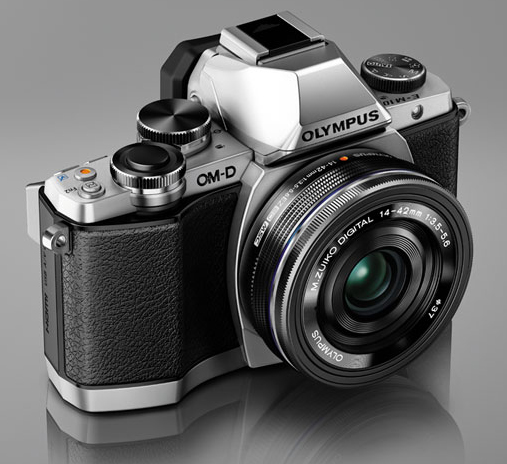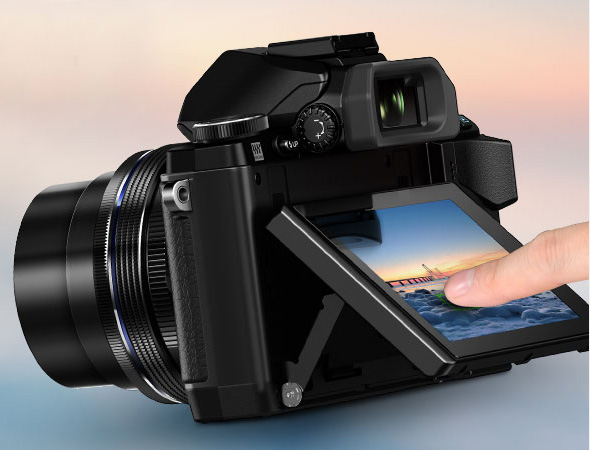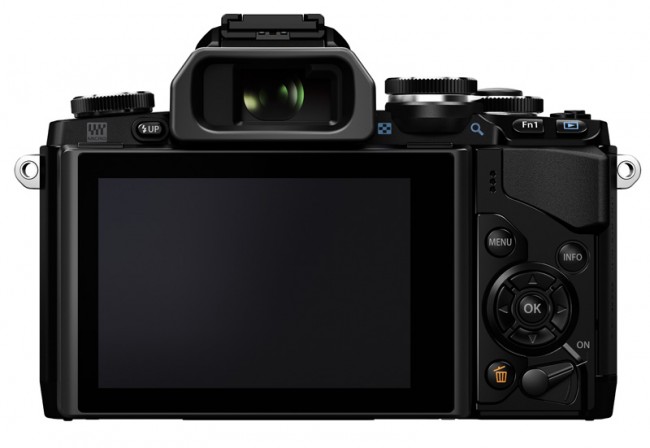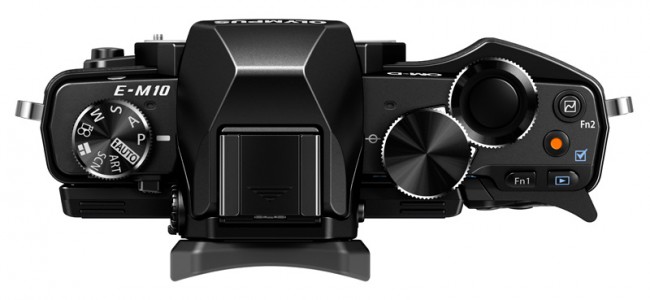 The E-M10 by Olympus is the third in the OM-D series, following on from the highly rated EM-1 and E-M5. It fills a gap that existed at the entry-level of the series, and opens things up for a whole new range of photo enthusiasts.
The E-M10 by Olympus is the third in the OM-D series, following on from the highly rated EM-1 and E-M5. It fills a gap that existed at the entry-level of the series, and opens things up for a whole new range of photo enthusiasts.
Like it’s older brothers, the EM-10 is a micro four thirds system camera, and has a sensor that’s a little smaller than the APS-C sensor found on most entry level DSLRs and some other mirrorless cameras, like Fujifilm’s X-Series, and the recently announced A6000 from Sony. It carries 16 megapixels, and has an aspect ratio of 4:3 instead of the more common 3:2, so a little bit squarer. It is possible to to change to other aspect ratios like 3:2 or 1:1, but essentially this means that a portion of the image captured is cropped out.
Ergonomically, the EM-10 is nicely weighted, and feels solid in the hand. It’s interesting that while the compact nature of mirrorless cameras is one of their major features, this might actually be holding them back from more widespread acceptance, as on first glance they might look more akin to a point-and-shoot than a DSLR. Like a lot of mirrorless manufacturers, Olympus has chosen to counteract this effect by adding manual control dials on the top of the camera which not only add to the retro-style that is so popular right now, but also lets people know that this is a camera that can take ‘serious’ photographs.
 One of the features on the EM-10 that immediately caught my eye was the touchscreen. Although touchscreen technology is widespread nowadays since the advent of smart devices, camera manufacturers have been very slow, for whatever reason, to include it in their latest releases. The touch sensitive LCD screen on the EM-10 allows you to choose your focus point while shooting, and you can also enable it to simultaneously choose a focus point and activate the shutter with a single tap, which is cool. In terms of accessing menu options though, Olympus hasn’t really unleashed the full potential of the touchscreen here and it still requires the use of a dial in tandem with the touchscreen to get things done.
One of the features on the EM-10 that immediately caught my eye was the touchscreen. Although touchscreen technology is widespread nowadays since the advent of smart devices, camera manufacturers have been very slow, for whatever reason, to include it in their latest releases. The touch sensitive LCD screen on the EM-10 allows you to choose your focus point while shooting, and you can also enable it to simultaneously choose a focus point and activate the shutter with a single tap, which is cool. In terms of accessing menu options though, Olympus hasn’t really unleashed the full potential of the touchscreen here and it still requires the use of a dial in tandem with the touchscreen to get things done.
I do have to say that overall I was not too impressed with the menu layout. I just found it overly complicated and unintuitive, and I hope that Olympus goes back to the drawing board and reworks things from scratch, because for me, good menu layouts are an absolute must in any camera.
The LCD screen is tiltable, which is a feature I like, particularly in crowded situations. You also have a nice big electronic  viewfinder, with a snappy refresh rate which means very little lag.
viewfinder, with a snappy refresh rate which means very little lag.
A lot of photography purists demand a viewfinder, and I have to admit that I was under the impression that using the viewfinder on a mirrorless camera would get you more shots per battery charge. Having looked at some specs however, the opposite may be the case. For example the Sony A6000 specs indicate 310 shots per battery charge using the viewfinder, and 360 shots using the LCD screen, which is a pretty significant difference.
Battery life is an issue for mirrorless camera users because one of the drawbacks of the category is the battery doesn’t last nearly as long as, say, a DSLR.
When I first turned on the EM-10 I was impressed to see a built-in lens cap on the 14-42mm II R lens which snapped back to reveal the lens underneath. I love this feature because, honestly, I have a hard time keeping track of lens caps. In fact when I’m photographing it often looks like a bit of a yard sale.
When I started shooting I was immediately impressed by the autofocus speed, which was super quick to lock on the subject. The EM-10 uses an 81 point autofocus grid which covers the entire frame. It also offers focus peaking in manual mode, which is another of the unique features of mirrorless cameras that I really like. It’s hard to describe without seeing it in action, but it works by adding an effect, or ‘fringing’ the sharp area of the scene, and is very effective.
Shooting Modes
Olympus have thankfully not gone overboard with the number of shooting modes. As expected you get automatic mode and the usual manual modes. You also have a video mode, and an ‘Art’ mode where you can choose from a range of creative filters to apply to your image. You can also add further filters to the image afterwards. If you set the image quality to RAW you’ll actually get two files – one jpeg with the filter applied and one RAW file with all the original, unadulterated information in tact.
 There’s also a ‘Scene’ mode which automatically chooses settings based on the type of image you’re trying to create. I found this mode actually worked quite nicely, and I’m not sure why it’s not the default automatic mode. You can also shoot a panorama in Scene mode with up to 10 frames. The OM-10 even offers you guides to line up the current image with previous, which is a nice touch.
There’s also a ‘Scene’ mode which automatically chooses settings based on the type of image you’re trying to create. I found this mode actually worked quite nicely, and I’m not sure why it’s not the default automatic mode. You can also shoot a panorama in Scene mode with up to 10 frames. The OM-10 even offers you guides to line up the current image with previous, which is a nice touch.
Olympus have also come up with a unique mode called ‘Photo Story’, which allows you to create a collage right there on the camera, and also apply filters to the images. I found this a little bit of a gimmick, which I could really only imagine using to kill time if I was away from my computer.
All-in-all, I did enjoy using the OM-10. The image quality is really nice, and not many models offer all those lovely manual control dials at this price point. The menu situation was problematic for me though, and I also wish I could have had the ability to simplify the amount of information overlaid on the frame while shooting, instead of just choosing everything or nothing.
I think this is really strong release from Olympus given the price point and the features, and I think when consumers compare it to other mirrorless cameras at a similar or slightly higher price, they see it represents great value for money.
Here’s a few more notheworthy features (from the Olympus news release):
- Built-in Wi-Fi expands possibilities for easy sharing and various remote functions for more enjoyable photos
- Built-in high-performance flash for 1/250 sec. syncro even in daylight syncro shooting
- High-resolution touch tilting LCD monitor for shooting at a various angles
- Live Composite lets anyone easily capture light trails when capturing shots of stars
- Photo & Movie Capture lets you capture high-quality still images without interrupting movie recording
- The ultimate iAUTO has advanced to automatically detect subject movement




Would it possible to find a digial camera body that would accept an old pentex type screw mount lense? I know I’m talking about (dinosauer egg technology) but I have to ask!
Hi trikeerik,
Do a search for ‘pentax lens mount adapter’ and you may very well find exactly what you need. There are loads of lens mount adapters out there that will allow you to mix and match different lenses and different bodies. In some instances however you will lose the autofocus function, because the different makes won’t communicate properly.
Good luck!
Comments are closed.